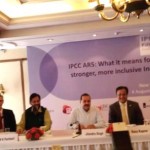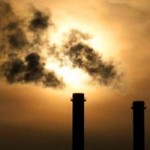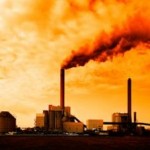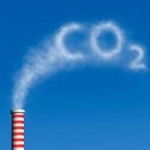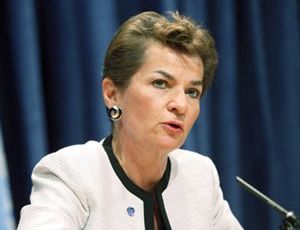 Bonn – UNFCCC Executive Secretary Christiana Figueres, the UN’s top climate change official, said the findings of the latest IPCC report on climate change are a clarion call for the global community to accelerate efforts to combat climate change and steer humanity out of the danger zone.
Bonn – UNFCCC Executive Secretary Christiana Figueres, the UN’s top climate change official, said the findings of the latest IPCC report on climate change are a clarion call for the global community to accelerate efforts to combat climate change and steer humanity out of the danger zone.
On Friday, the UN Intergovernmental Panel on Climate Change (IPCC) released the first installment of its Fifth Assessment Report (AR5), on the science of climate change.
“The report shows that there is more clarity about human-generated climate change than ever before. We know that the total effort to limit warming does not add up to what is needed to bend the emissions curve. To steer humanity out of the high danger zone, governments must step up immediate climate action and craft an agreement in 2015 that helps to scale up and speed up the global response,” Executive Secretary Figueres said from the United States, during her mission to the current UN General Assembly in New York.
Governments under the United Nations Framework Convention on Climate Change (UNFCCC) have agreed to limit the global temperature rise to two degrees Celsius to avoid the worst impacts of climate change. They have also agreed to assess the adequacy of this limit and progress towards this goal using the best science, including this IPCC report. This formally agreed international review will conclude in 2015 in Paris, at the same time as the new, universal climate agreement.
“As the results from the latest and best available science become clearer, the challenge becomes more daunting, but simultaneously the solutions become more apparent. These opportunities need to be grasped across society in mutually reinforcing ways by governments at all levels, by corporations, by civil society and by individuals,” said Ms. Figueres.
“Thankfully, momentum to fight climate change is building. We know that success is possible. We have the technology, funding and ability to respond. The many successes at domestic, international and private sector levels to build a low-carbon society shine light on the way forward, but we do need to quickly go to scale,” she added.
Governments meeting for the next round of UN climate change negotiations in Warsaw from 11 to 22 November will consider the IPCC findings on the science of climate change in the context of the UNFCCC review.
In March of next year, the IPCC will release the second installment of AR5 that addresses impacts and vulnerabilities. A third installment outlining options to curb greenhouse gas emissions will be published in April 2014. The final installment, an overall summary for policy makers, is due in October 2014, shortly before the UN Climate Change Conference in Lima, Peru. These reports give governments tools that help design the architecture and content of the 2015 agreement.
Source: UNFCCC.
About the UNFCCC
With 195 Parties, the United Nations Framework Convention on Climate Change (UNFCCC) has near universal membership and is the parent treaty of the 1997 Kyoto Protocol. The Kyoto Protocol has been ratified by 192 of the UNFCCC Parties. For the first commitment period of the Kyoto Protocol, 37 States, consisting of highly industrialized countries and countries undergoing the process of transition to a market economy, have legally binding emission limitation and reduction commitments. The ultimate objective of both treaties is to stabilize greenhouse gas concentrations in the atmosphere at a level that will prevent dangerous human interference with the climate system. For more information, visit http://unfccc.int/.

